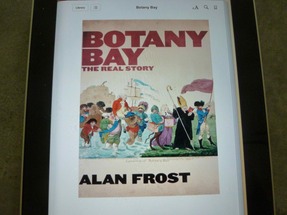
I have long suspected the conventional wisdom of the Australia in which I grew up and the condemnation of the so-called Black Armband historians in the recent History Wars spring from a common assumption there are things we would prefer not to know and, indeed, are better off not knowing.
Growing up in the Anglophile Menzies era, there was a definite perception that Australia didn’t really have much of a history, at least not when compared to the historical glories of the British Empire, and what subsequently became the conventional wisdom regarding the decision that despatched the First Fleet was clear cut, the judge’s decision was final and no correspondence was to be entered into.
As far back as the early 1950s, however, K. M. Dallas was suggesting Britain wanted a settlement to support an expansion of their interests in the Pacific and provide an alternative sea route to China. In this reading, it was the north Pacific fur trade, the development of sealing and whaling in the southern oceans and improved access to the China and South American trade that made the settlement of Australia viable.
While there would appear to be evidence to support that hypothesis (whale and seal oil were in high demand in Britain, and five of the ships from the Third Fleet had been whalers and reverted to their original function after the voyage) this sort of suggestion ran counter to the standard narrative of hard times, surly convicts, unsuitable tools and failed harvests that lasted until some time around the start of Governor Macquarie’s relatively benevolent rule.
Geoffrey Blainey's The Tyranny of Distance (1966) drew on Lord Sydney’s suggestion that the colony’s purpose was to be reciprocally beneficial, the only explanation given in official documents for the choice of such a remote location. In this reading, the benefit derived from a trade in flax, hemp, and timber for masts that would provide an alternative source for such materials should a blockade in the Danish straits cut off access to the regular sources on the shores of the Baltic Sea.
A second, and secondary, benefit lay in the possibility that empty convict ships could carry cargoes of tea on the return voyage, and there is no doubt the security of trade routes to China were of major concern, given the fact that the regular route between India and China could easily be cut in the Sunda and Malacca Straits.
From where I was sitting forty years ago all this made a great deal of sense, more sense, in fact, than the conventional wisdom that the American Revolution cut off the previous export destination for the criminal classes at the same time as changes associated with the Agrarian and Industrial Revolutions were adding vast numbers of petty offenders to the onshore jails and hulks moored in the estuaries. There was nowhere else to send those sentenced to transportation across the seas and Botany Bay was far enough away to ensure that those who’d been transported were unlikely to return once their sentence had been completed.
After Dallas and Blainey others have questioned the conventional wisdom, and the questioning has produced a vigorous defence from the traditionalists. Frost's “real story" of the origins of Botany Bay draws on both sides of that debate, but does it by doing what someone should have done long ago and heading off to the primary sources, going beyond the obvious ones that fuelled the assumptions of previous generations of Australian historians.
Thirty-five years of delving into the primary sources in Australia and overseas (most notably the Public Record Office, or National Archives, in London) has given Frost, emeritus professor of history at La Trobe University, the chance to build up an archive of 2500 documents, enough material to deliver a thorough analysis of the decision to establish a colony in New South Wales.
Looking at the standard version of events the decision was based on the rising number of convicts who needed to be transported across the seas, so it makes sense for Frost to start by looking at crime and punishment in eighteenth-century England, tracing transportation back to the Tudor era, with convicts being sent abroad as early as 1597. They’d been used as a source of cheap labour in Africa, the Caribbean and India, and, after 1666, North America, the preferred destination until 1776.